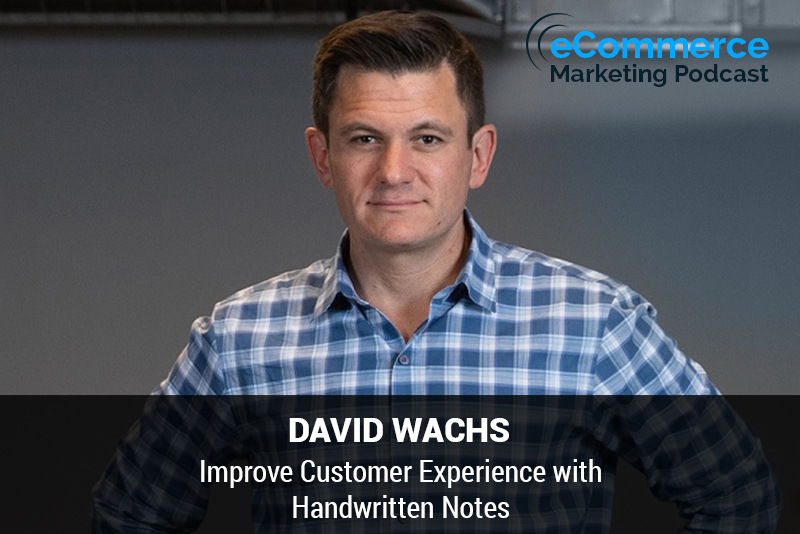
The eCommerce Marketing Podcast walks you through everything that goes into ecommerce marketing — from inbound marketing to paid advertising to conversions. Learn the strategies top marketing experts use to grow their businesses.
Marketing Strategies Revealed in this Episode:
- Improving the post purchase follow-up and why it’s important
- How sending a handwritten note can make a difference
- What to mention in a handwritten note
- How to track the results of handwritten notes
- How customer experience personalization will change in the future

Episode Title: Improve Customer Experience with Handwritten Notes
Guest: David Wachs, Founder of Handwrytten
In this episode of the eCommerce Marketing Podcast, Arlen Robinson interviews David Wachs, the founder of Handwrytten. David discusses how his company is reviving the lost art of handwritten notes using scalable, robot-based solutions that write notes in pen. He shares his entrepreneurial journey, the importance of personalized post-purchase follow-ups, and innovative ways eCommerce businesses can use handwritten notes to enhance customer relationships and boost loyalty.
Key Takeaways:
- Introduction and David’s Background (00:01:00):
- David’s journey from studying computer science and finance to creating Handwrytten.
- Previous ventures, including the mobile marketing platform Cellit.
- The Concept and Importance of Handwritten Notes (00:04:00):
- The idea behind Handwrytten and how it aims to make sending handwritten notes as easy as sending emails or texts.
- The emotional impact and personal touch of receiving a handwritten note.
- Post-Purchase Follow-Up and Customer Loyalty (00:10:00):
- Importance of post-purchase follow-ups in building customer loyalty.
- Statistics showing the higher open rates and positive responses to handwritten notes compared to digital communications.
- Using Handwritten Notes for Reviews and Customer Feedback (00:15:00):
- How handwritten notes can be used to request reviews and head off negative feedback.
- Case studies demonstrating increased loyalty and positive outcomes from using handwritten notes.
- Creative Uses of Handwritten Notes (00:20:00):
- Incorporating referral codes and discount offers in handwritten notes.
- Examples of businesses using handwritten notes to enhance customer experience, including adding doodles or personal messages.
- Tracking the Effectiveness of Handwritten Notes (00:25:00):
- Methods for tracking the impact of handwritten notes, such as AB testing and promo code usage.
- Success stories and return on investment examples from Handwrytten clients.
- Combining Digital and Physical Touchpoints (00:30:00):
- The value of integrating traditional handwritten notes with digital marketing strategies.
- The unexpected delight and customer appreciation generated by receiving a handwritten note.
Guest Information:
- Name: David Wachs
- Position: Founder of Handwrytten
- Contact:
- Website: Handwrytten
- Twitter: DavidBWachs
- LinkedIn: David Wachs
- Email: [email protected]
Special Offer: Use the signup code eCom at Handwrytten to receive $5 in credit for your first purchase.











